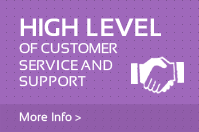
Email Scams. A few key points.
posted in Information guides by Kelly on 14:33 Apr 13th, 2017
Everyone will have seen one of these emails maybe without even knowing it.. the ones that tell you a long lost relative in Outer Mongolia has died and left you a fortune you just need to hand over your details and payment for £99.99 for admin fees and then the multiple £££££ will be transferred to your account. Or the ones from your bank saying you need to click on the link to confirm your login details etc etc. The ways in which criminals have devised of getting your information from you have become increasingly more devious and complex. Now the scam sites they link to in emails are so authentic looking that it is difficult to tell a fake site from a proper one. Still there are a number of hints and tips to apply alongside good old fashioned common sense in protecting yourself against email fraud.
To give you an example the Australian Competition and Consumer Commission produce some amazing visual displays of figures by way of charts and graphs for crime figures from 2016 showing the breakdown of email crimes to different categories. They state the biggest area of growth in email crime comes in the form of emails relating to romance and relationships which I have to say surprised me no end. It is not an area that I expected to feature in relation to email crime let alone to be the top area of growth. They state that cybercrimes relating to dating and romance have cost $25 million Australian dollars. This is an astounding figure. Email crime cost the Australian economy $17 million dollars. It just goes to show that crime can pay :). These figures show no sign of decreasing as the cybercriminals always seem to remain one step ahead.
Today we are considering email scams and like I said there are a number of ways that you can protect yourself and reduce risks to yourself. I shall address these in list format so it makes for easy digestion of the information. Please feel free to share this blog to friends and family on social media or by email. If we can help protect or reduce the risks to only one person it is an achievement no matter how small.
So here we go....
- Most importantly NEVER download attachments from emails unless you are expecting someone to send you something or you can 100% trust the person who sent you it. Sending someone an email back saying "hey I have just gotten an email from you with an attachment and just want to be sure that it is something you sent before I open it" takes mere seconds and can save a lot of heartache in the long run. Email attachements that people unwittingly download or click on is a major contributor in Malware infections. It can result int he installation of nasties like keyloggers that then gather your data and transmit it to someone else. Many people will use the same password from every site the they are registered with so once they sift through and locate one password and your email address then bingo they have access to everything. If your password is simple the bots they use to scan the data for login details can pick these passwords up scary fast and it then opens you up to a whole host of other problems. ALWAYS be safe if in doubt do NOT open it. Always air on the side of caution.
- Check the senders address. When you open up your emails (and in some cases before you open if your email provider shows you the address you have received the email from) look at the address your email has come from. Is that address 100% correct or does it just look like it is nearly right?? Cloning of email addresses so they look like the real deal is so common it happens every second around the globe. Major companies like Paypal, LLoyds Bank, HSBC Bank have all had customers receive emails to name but a few that say they are from that company but when you look at the address you can see that the layout is not quite right.
- This type of crime was originally covered as part of the Nigeria 411 scam whereby most of the culprits were orgininating out of Nigeria. Now this is not the case. One thing remains consistent however. As in the majority of cases English is not the cybercriminals first language the spelling, grammar and manner of the email will be totally wrong with many misspelt words and badly used grammar. This always raises alarm bells. If the email does not read right then delete it. DO NOT click on anything and do no respond. If the sender is saying they are from your bank etc then contact them and they will give you an address to send that email on to. Sometimes this can be of help in tracking these people down.
- Look at the name on the email. If the email is not addressing you correctly the chances are that it is a fraulent scam email. These emails are sent en masse and they are trying to use your email address to pull a name to personalise the email to make you more likely to open and do what it wants you to do inside. Companies like Amazon for example will always address you by title, Christian name and then Surname not the other way around. If this is not correct then once again the chances are that the email is fake.
- Are you expecting an email from that person/company?? If the email is turning up and you are not expecting it and it seems out of sorts for the person sending it then the likelihood is the email is fake. It could be the person sending it has Malware on their device that is causing mass mail send out to everyone in their address book or that it is simply a scammer after your information via click links etc. Check the address and if it is genuine then send an email direct to the person sending it asking if they meant to send you that email and let them know something could be wrong.
- Links in emails - NEVER ever click them. If you think the email from LLoyds telling you that you need to check your account is genuine then go to your web browser and type in www.lloyds.com and go and log in. NEVER use the link in the email. The chances are high that in today's world where every other email is spam that this one is too. Links in emails will always take you to a secure https connection. If you do click the link check to see in the brower address bar whether it says you are on a https connection or not. All banks, building societies and email providers will use https connections so the data sent back and forth is encrypted and secure (see my blog on security).
Common sense and not panicking plays a massive part in keeping yourself secure with regards to emails, the internet and other scams. Use your brain and do not hit panic mode. Email crimes fall under the heading of phising attacks for the most part and people are after your information. In today's increasingly digital world information is worth money and there are plenty of people and companies willing to pay for it. Jonathon Crowe on the Barkly blog states that statistics show that 85% of companies reported being victims of phising attacks in 2015 and this was a rise of over 30% in comparison to the previous year. This goes to show how fast and widely internet based crimes are growing. With more and more users spending increasing amounts of time online and doing more on the internet it shows the level of risks people can be exposed to. Once again using your common sense is the first port of protection.
If you would like more help do not hesitate to get in touch and check out our other blog posts :)
Stay Safe
Kelly














